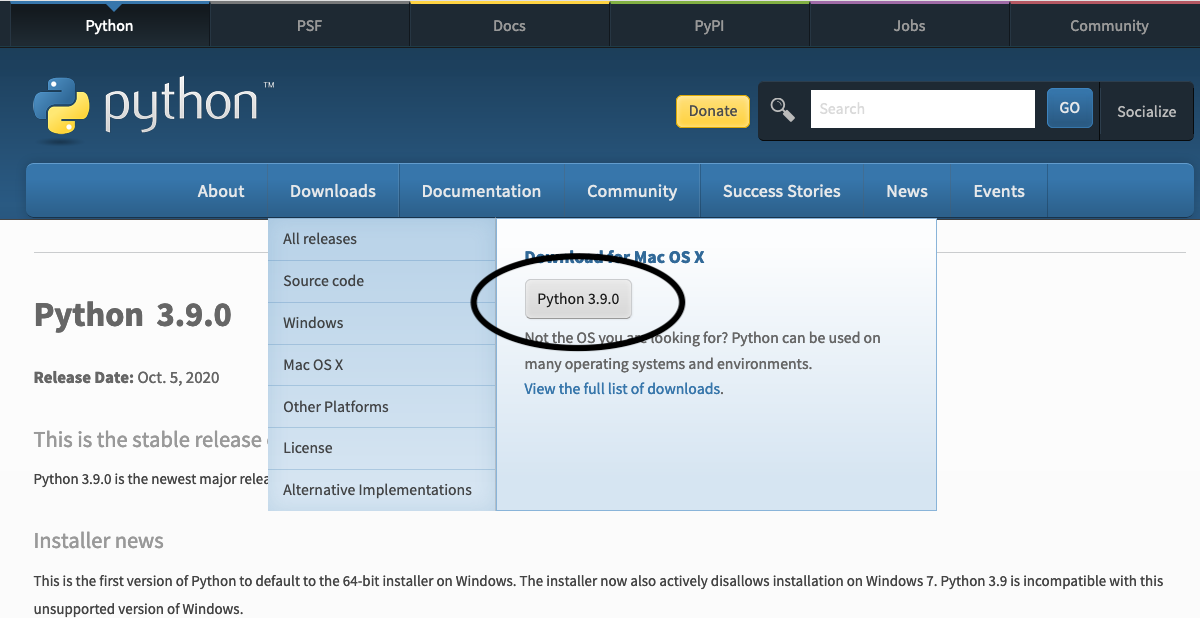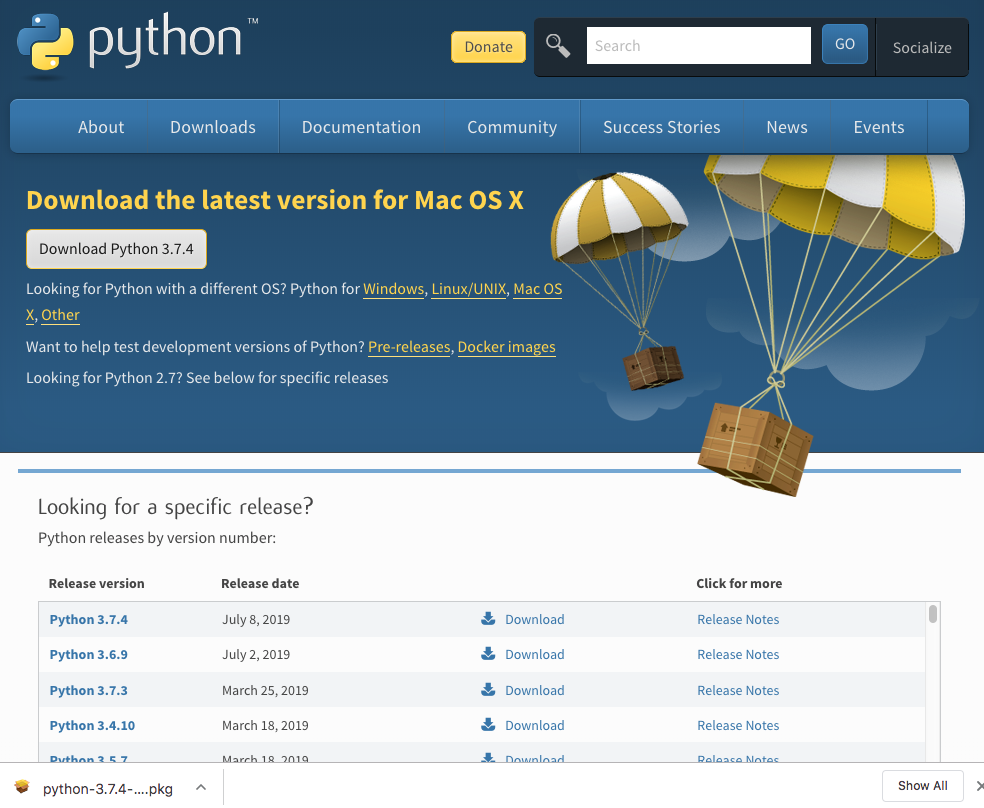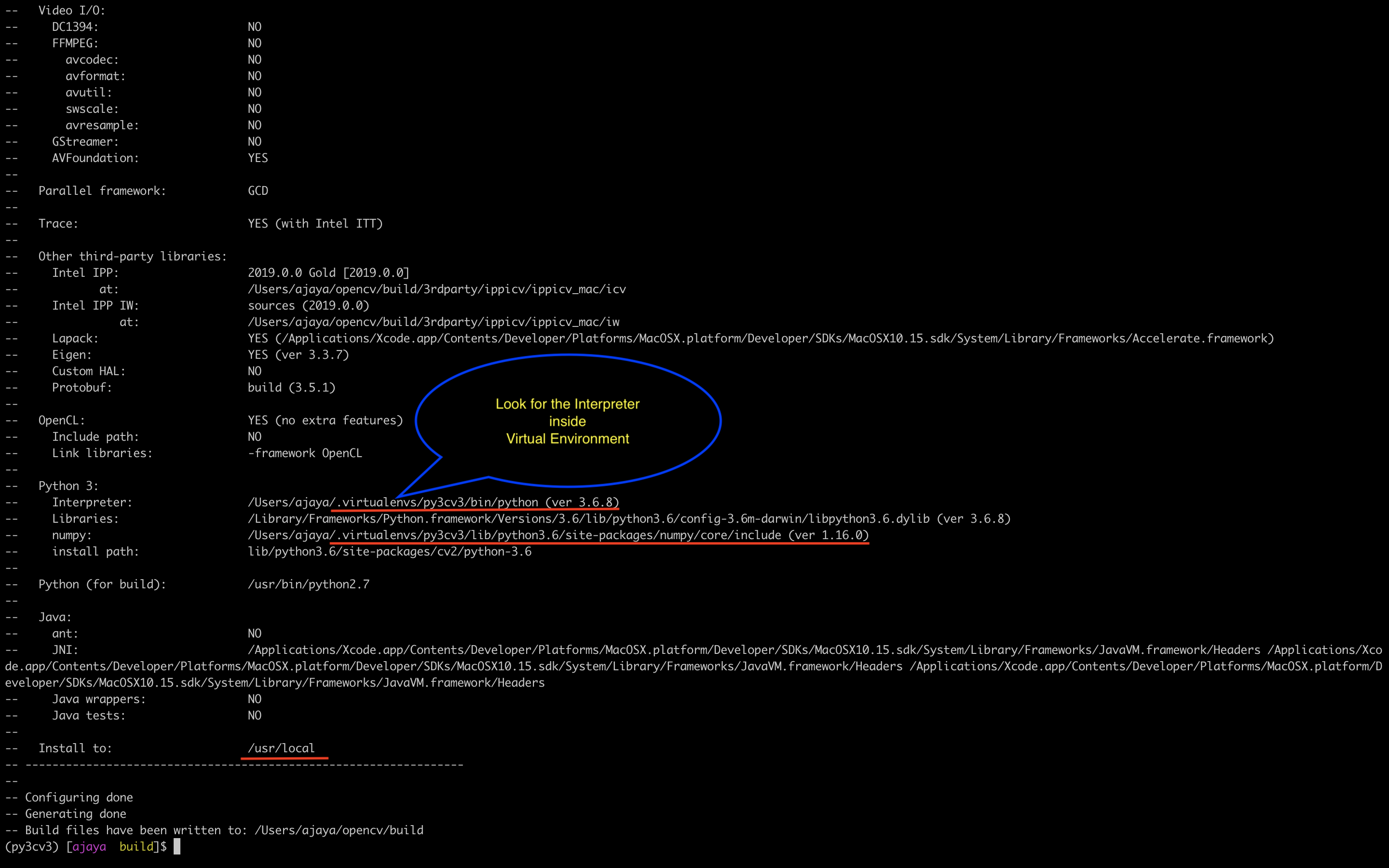

And Python 4.x will be out soon, but it will be completely backward compatible. The entire Python community has now moved on to using Python 3.x (the current version as of writing this is 3.9). Why bother, you ask, when Apple includes Python along with macOS? Here are some reasons: But it's Python Version 2.7, which is now deprecated (abandoned by the Python developer community). We are going to install the latest version of Python via asdf and its Python plugin. Installers are available for the latest Python 3 and Python 2 releases that will work on all Macs that run Mac OS X 10.5 and later.

The easiest way to do that is to install one of the binary installers for OS X from the Python Download page. However, to take advantage of the latest versions of Python, you will need to download and install newer versions alongside the system ones. Anaconda works on Windows, Mac, and Linux, provides over 1,500 Python packages, and is used by over 15 million people. For details, please follow the steps in the macOS Configuration Guide. Python comes pre-installed on Mac OS X so it is easy to start using. GCC can be obtained by downloading Xcode, the smaller Command Line.

This guide assumes that you have already installed Homebrew. Procedure Install Python 2, enter: brew install python2 Make sure the Python command points to the latest Python you installed with Homebrew: ls -l which. THIS appendix explains how to install on your computer the software you will need for programming in the Python programming language. Before installing Python, youll need to install GCC. While installing Python and Virtualenv on macOS Monterey and Big Sur can be done several ways, this tutorial will guide you through the process of configuring a stock Mac system into a solid Python development environment. Python Development Environment on macOS Monterey and Big Sur


 0 kommentar(er)
0 kommentar(er)
